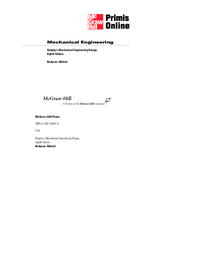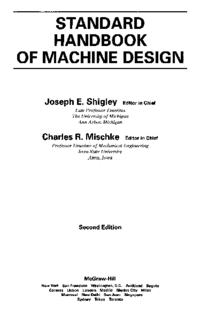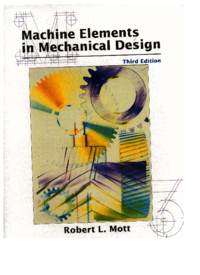Etiqueta "Machine Design"
Se han encontrado 3 Coincidencias
Shigley's Mechanical Engineering Design
133 Visitas | 187 Descargas | 2013-10-01 13:54:12 | efirvida
This text is intended for students beginning the study of mechanical engineering design. The focus is on blending fundamental development of concepts with practical specification of components. Students of this text should find that it inherently directs them into familiarity with both the basis for decisions and the standards of industrial components. For this reason, as students transition to practicing engineers, they will find that this text is indispensable as a reference text.

STANDARD HANDBOOK OF MACHINE DESIGN
82 Visitas | 270 Descargas | 2013-10-01 16:06:08 | efirvida
There is no lack of good textbooks dealing with the subject of machine design. These books are directed primarily to the engineering student. Because of this, they contain much theoretical material that is amenable to mathematical analysis. Such topics are preferred by the instructor as well as the student because they appeal to the student's scientific, mathematical, and computer backgrounds; are well-defined topics with a beginning, a middle, and an end; and are easy to use in testing the student's knowledge acquisition. The limited amount of time available for academic studies severely limits the number of topics that can be used as well as their treatment. Since textbooks devoted to mechanical design inevitably reflect this bias, there is great need for a handbook that treats the universe of machine design—not just the readily teachable part.

Machine Elements In Mechanical Design
149 Visitas | 157 Descargas | 2013-10-01 13:31:00 | efirvida
The objective ofthls book is to provide the concepts, procedure, data, and decision analysis techniques necessary to design machine elements commonly found in mcchanical devices and systerns. Students completing a course of study using this hook should be able to execute original designs for machine elements and integrate the elemenls into a system compoed of several elements.
Contribuir
Usted puede contribuir con Libros UCLV, es importante para nosotros su aporte..
Contribuir